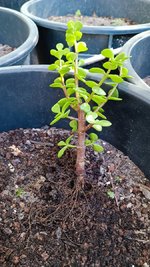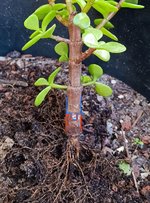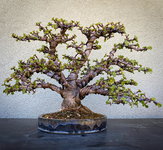Hi, new here...
I might have some good news

I have sucessfuly grafted a portulacaria root stock with the trunk of another portulacaria.
The root base was nice but i didnt like the trunk so i choped it low near the base and then with a drill i opened a hole on the root base. Then with a grafting knife i carved the trunk of another cut of portulacaria to fit snugly into the root base. I pushed it in snug and didnt need anything else... I did this last year on july and it is alive and vigorous, tomorow i will post pictures here

Since this was sucessfull im probably testing this year on older trunks to drill a hole and place a cuting inside snugly like i did last year and i'm hoping the it works... If it works it will be great to make amazing bonsai with portulacaria in no time!
Edit: i think mine worked because of the "snugness" in which i placed the trunk in the hole, that way there is probably fluid transfering and it doesn't send portulacaria into "panic mode" sending roots to survive... I will drill a hole and scrape the bark off of the section of the cuting that will fit in that hole so the tissue is the same. Hope you understand what im saying






